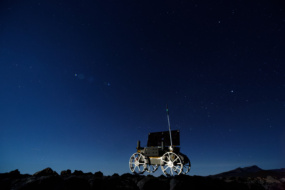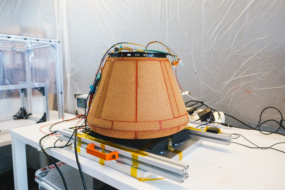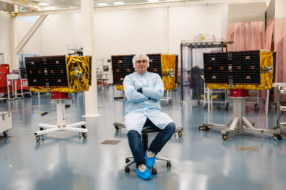Getting around: The global navigation satellite systems (GNSS) in operation right now are owned and operated by governments. The US has GPS, the EU has Galileo, and Russia and China each operate their own positioning systems. These satellites reside in a medium Earth orbit at ~20,000km and, in GPS’ case, were designed half a century ago.
These positioning, navigation and timing (PNT) constellations are integral to how we get around down on Earth. But new technologies, including autonomous vehicles, call for a higher-precision navigation system with higher security.
Enter Xona: The California-based company aims to be the first commercially operated GNSS constellation from the US. Its planned Pulsar constellation of next-generation navigation satellites will live in LEO, about 20x closer to the ground than legacy GNSS.
“There’s all sorts of challenges, especially when you’re trying to get down to centimeter-level precision,” Brian Manning, Xona CEO, told Payload. “First of all, you have to know exactly where your satellites are to that level of precision. And then you have to be able to communicate that down to earth, also without losing any precision. That hasn’t really ever been done before from low Earth orbit.”
The move to LEO, while it will allow higher precision and data flow, introduces new challenges with accurate timing. “Navigation is all about timing,” Manning said. “Everything has to be time-synchronized to a nanosecond level.”
- GPS and other GNSS constellations are equipped with heavy, bulky clocks on board to keep them in step, Manning said.
- Xona leverages a patented atomic clock technology to keep its systems in sync and to offload the bulk of physical clocks to the cloud.
Hands-off driving: Xona’s satellites are designed with the requirements of autonomous driving in mind. “Our company mission is really formed around enabling modern tech to operate safely,” Manning said. “Safety is kind of a sliding scale, and it’s a tough thing to really pin down as to how safe is safe enough.”
The company’s CTO, Tyler Reid, comes from Ford’s autonomous driving unit and had a significant role in working out the standards for what kind of positioning precision is needed to support safe autonomous driving. (Talk about recruiting from the source.) Turns out, to match or exceed the safety standards for other forms of mass transit, self-driving cars need to collide less than once per one billion miles for the navigation system alone.
- Since the navigation component isn’t the only fallible element at play in a self-driving car, the vulnerability of each individual system has to be particularly low in case any one system fails.
- For example, if the vision system built into your autonomous vehicle fails, you’ll still have redundancy if your PNT system can pinpoint your location and speed to a very high level of accuracy.
“We need centimeter precision for the age of autonomy,” said Jeff Crusey, a former Seraphim investor who spearheaded the fund’s investment in Xona before leaving last month to start his own firm. Xona, Crusey says, has struck on “highly differentiated tech that is very hard to replicate.”
Huginn news: The company raised $8M in September from Seraphim Space Investment Trust and MaC Venture Capital to fund its first mission, Huginn. Xona has passed off that first mission and is hands-off until commissioning begins soon after launch, when they’ll test all the onboard systems and ready to begin the demo.
- “We broke all sorts of stuff” during the testing phase, Manning said. “We broke hardware, we broke software, we broke electronics—anything you can think of, we probably broke it. But that’s also how you go so fast. Fail fast and fix what failed.”
Coming up: Eventually, Xona aims to have a constellation of ~300 PNT satellites in LEO, but Manning says they can begin services with about 40 sats in orbit, which would give coverage to over ~70% of the world’s population.




